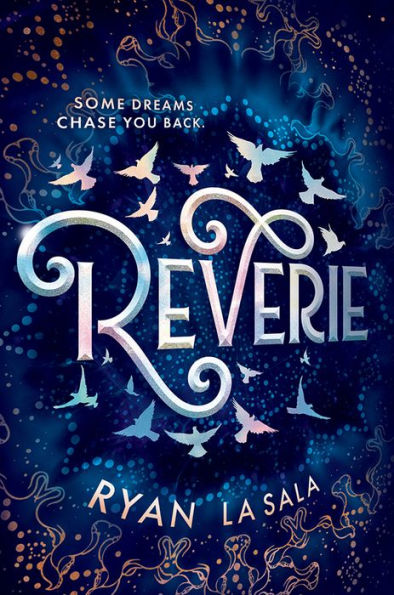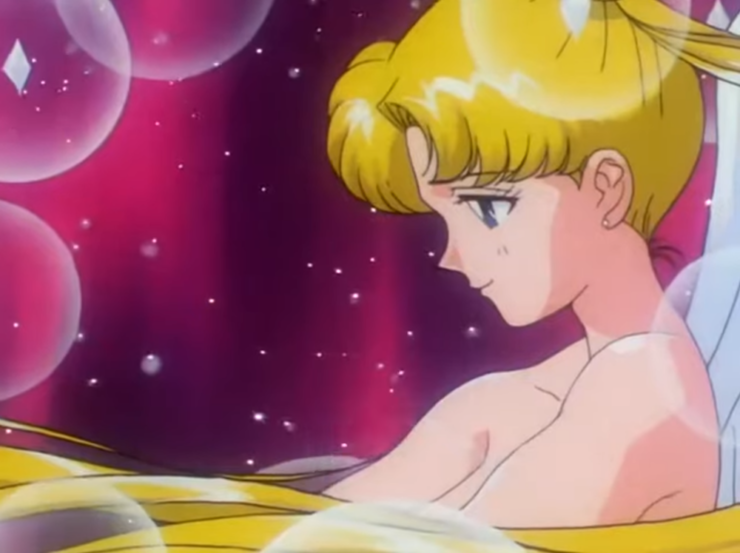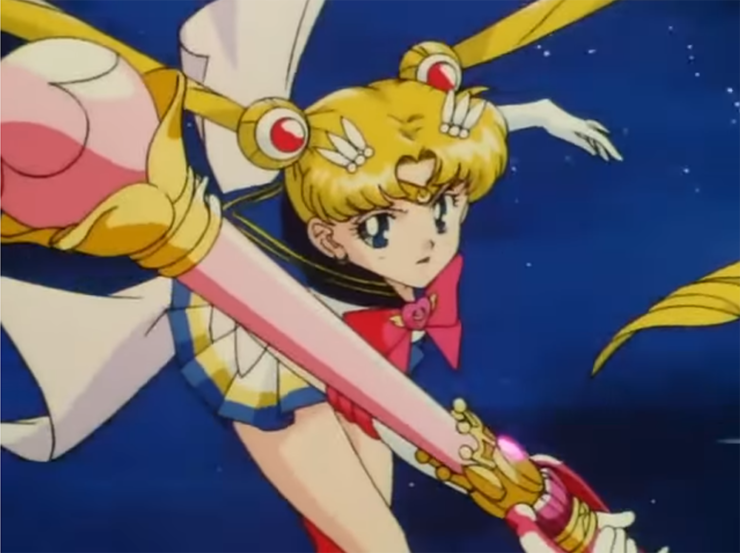I used to sit in church and dream of Sailor Moon.
Maybe I was woozy off the plentiful Greek incense. Or maybe it was the air full of rainbow light and glittering dust. In those pews, we were all in conversation with our salvation, weren’t we? I knew I was supposed to be praying towards the to-scale figure of Jesus, crucifixion cast in gold above us, but he never seemed to listen. Instead, when my young mind rose skyward, it found Usagi Tsukino, a teenage Japanese schoolgirl. An ancient, resurrected moon princess. A clutz, and crybaby. The original beautiful disaster, and my own celestial savior.
From a young age, I was captivated by Sailor Moon and her strange brand of ultra-beautiful magic. Everyone was, it seemed. Boys, girls—even the villains Sailor Moon vanquished on a weekly basis couldn’t help but comment. “LOVELY,” they would cry as Sailor Moon vaporized them in a rainbow wave from her scepter. Or, “BEAUTIFUL!” as they were dragged into a kaleidoscopic oblivion.
Their screams straddled anguish and ecstasy, and it made no sense at all to my American ears. When had beauty alone become so powerful? So profound? When had I ever seen beauty used by a hero for more than just a saucy distraction? And the more I thought about it, the more I noticed a secondary, but far more important quality to Sailor Moon’s magic: not only was it beautiful. It also healed.
Many will assert that, no, Sailor Moon’s main power was throwing a tiara like a frisbee. Which, yes, there was that. But longtime fans know that Sailor Moon’s magic eventually blooms into an arsenal of purifying spells, each name longer than the last. We have Moon Healing Escalation, and Moon Gorgeous Meditation, and my personal favorite: Starlight Honeymoon Therapy Kiss. Sailor Moon shouts these incantations amid poses and pirouettes, as though grace alone allows her to conjure the glittering, rainbow blasts. She uses them to purge nightmares, demons and monsters alike from their human hosts. And though their effects sometimes vary, these attacks are in both the manga and the anime. They’re canon, and part of the original vision of Naoko Takeuchi, Sailor Moon’s creator.
This artistic choice of violent, forceful healings fascinated me. It was like a vampire getting staked in the heart by Buffy Summers, and groaning with gratitude before going all dusty. What did it mean, that Sailor Moon’s magic was so powerfully gorgeous that, even in the midst of annihilation, it inspired awe? What did it mean that Sailor Moon chose to heal, and not kill, the majority of foes she fought in the anime?
Buy the Book


Reverie
The answer can be found in the foes themselves. In the world of Sailor Moon, a monster might be anything. Sometimes the monsters were everyday objects imbued with evil spirits, which Sailor Moon would exorcise (anyone else remember the sexy elephant vacuum cleaner?). But often the monsters were actual people themselves, corrupted by darkness, or driven to desperation by circumstance, or manipulated into acts of depravity by forces of chaos and fate.
And, no matter how lost these people were to their own darkness, Sailor Moon tried to save them. She never lost sight of their humanity, no matter how her teammates insisted that certain monsters were simply unsalvageable.
Such a disagreement is a central conflict in Sailor Moon S (the third season), and it sparks between Sailor Moon and the lesbian power-duo Sailor Neptune and Sailor Uranus. The duo is hunting a young girl who is known to harbor a dark power that could end the world once awakened. Sailor Moon argues for the girl’s innocence, to the point of being brutalized on the girl’s behalf by her would-be sailor teammates. And Sailor Moon is even wrong! The young girl is overcome by her inner demons, and her dark potential does awaken, nearly destroying Tokyo.
But even then, Sailor Moon defends and protects her. A child is a child, despite the monstrosity that surrounds them, she contends. This ends up being the evil’s undoing. Earth is saved because Sailor Moon did everything she could to protect a little girl when no one else would.
In fact, many of the people Sailor Moon tries to save are young women or girls (or, if not female, very femme to the Western eye). Some of them are in the business of evil due of toxic love, and some are too young to really know better. Some just want to do a good job at their chosen profession, and some are simply just badass ladies. Sailor Moon cares for their souls indiscriminately, often fighting for them by fighting the evil out of them, often turning them from foe to friend.
This is important. It means that Sailor Moon’s magic is not simply glittering loveliness, nor is it a softened version of justice. It means the nature of Sailor Moon’s magic, and her brand of justice, hinges on her ability to rehabilitate those that have lost themselves and would otherwise do better, if they could just find their way back to the light. It means that Sailor Moon, as a hero, discards no one to their inner demons. She doesn’t fight monsters; she fights monstrosity itself, in whatever form it takes, in whatever host it inhabits.
I like this analysis of Sailor Moon for two reasons.
First, there is the sense that each of us has a dark potential that, if we aren’t careful, may warp us from the inside out. Turn us into caricatures of our ambition, or our avarice, or whatever dark facets we can’t help but have. I think this is a humane way of interpreting an individual’s capacity for good, bad, and the miles in between. It helps me feel better about my daily falls from grace, knowing that my faults are not all of me, or even most of me. It helps me feel better about the faults of other people, too.
Second, the interpretation of Sailor Moon’s magic as rehabilitative means that the potential of her power coincides with her capacity for compassion. Or hope, since Sailor Moon’s compassion is often framed as hope that a person can change, or wants to change if someone would just give them the chance. As the central character to a story, it’s odd that the role of humanizing the enemy would fall to her. Usually that task is taken on by the pure, soft-spoken side character. But no, in Sailor Moon, she manages to combine her role as hero and leader with this strange-yet-tremendous vulnerability. She’s the one to rush to mercy, and a surprising number of her foes take her up on it.
Take, for instance, the finale, which was never aired in the United States. By the end of the show, the world is about to be completely destroyed. Sailor Moon is locked in a grim battle with Galaxia, an evil sailor scout with tremendous power, who forces Sailor Moon into a duel with swords. This is atypical for Sailor Moon, and one of the only times we see her fight with a weapon that isn’t a jewel-encrusted scepter. She doesn’t want to fight, but in the confusion she manages to land a blow, drawing blood from Galaxia. It’s a turning point in the battle, and rare moment of valiance completely out of place with Sailor Moon’s usual timidity and softness.
And instead of using Galaxia’s surprise to turn the battle, Sailor Moon retreats into her own doubts about the violence itself. She retreats physically and mentally, to the point that she becomes cocooned in ribbons, and her once beautiful dress fades away to nothing. Literally nothing at all.

That’s right. In her final battle, as the fate of the universe hangs in the balance, Sailor Moon’s ultimate act of power is one of extreme vulnerability (and, sure nudity, which I have to give her credit for). And it works. Galaxia, deep down, recognizes the light shining from Sailor Moon, a hope so radiant it pierces the deepest depths of Galaxia’s interior darkness and, for just a moment, causes the villain to falter in her determination to end the world.
The final moments of the battle are clear in my mind. There are no Moon Healing Escalations, or Silver Moon Crystal Power Kisses. No shouted tagline, or slogans or tossed tiaras. There is only Sailor Moon, reaching out for Galaxia, reaching towards the part of her that still wants to be good. And against Sailor Moon’s mighty mercy, Galaxia’s own sword vaporizes, leaving the villain’s hand grasping nothing but air.
Sailor Moon is there to take her hand, and her touch is what purges the evil from Galaxia’s body. The darkness wrenches itself out of Galaxia in a black gust, retreating into the sky and leaving the rehabilitated villain to make amends to Sailor Moon. The series ends with all the loved ones Sailor Moon has lost coming back to her, granted a second life.
I’m telling you about this because I want to express the extreme beauty of this conclusion. So often, the height of a hero comes at the cost of their greatest adversary’s life. Those stories are important—we cannot make peace with everything, nor should we try. But I contend that the magic of Sailor Moon is perfect for the kind of hero she sought to be. One who lead with love and hope, and who conquered with compassion.
That was an important lesson for me, a young gay kid. I watched Sailor Moon, and internalized her somewhat naive outlook, and it helped me make peace with the harder moments of growing up. You see, I was (I am) visibly gay. Like, no-doubt-about-it gay. I one time tried to leave the house dressed only in scarves, as homage to Sailor Moon’s ribbon-festooned transformation. I was, as they say, a target, and I knew it. I’m not sure what would have become of me if, from a young age, I didn’t prioritize hope that people could be better to me if I just believed in them long enough.
But I didn’t always think of myself as the hero, either. Kids certainly didn’t. Their parents, who told them they couldn’t have playdates with me anymore, didn’t. I was, even as a kid, made aware of my own monstrosity in the eyes of my peers. I was the everyday object turned evil, or the flamboyant villainess cackling behind her feathered fan.
Sometimes, I would lean into this role for the impact it gave me. Usually for laughs. I found the power in being a spectacle.
But…I had my doubts about myself. Was I good, at the core? Could I be?
I’ll admit, as a young gay kid sitting in church, I badly wanted to believe that whoever was responsible for my judgement had half the compassion and hope of Sailor Moon. By the time I was a teenager, I was very aware of the ways my world, which could be unkind to kids like me, was warping me into something more than a little monstrous. I had to survive, didn’t I? And that took claws. It took more than claws. It took cleverness and trickery and a mean tongue. Sometimes I made people cry, and I would cry later, too, wondering what was happening to me.
Where was my own compassion going? My own vulnerable belief in people? My own kindness towards myself?
Growing up, I didn’t pray often, or really at all. But I daydreamed constantly. In church, I sat and dreamt of Sailor Moon. It was the pastel glow, and the reaching hymns. But it was also a hope deep inside me. I hoped—I dreamt—that when it was my turn to burn beneath the rainbow lights, it wouldn’t hurt. I hoped that I’d see what those many villains saw: compassion. Loveliness. The beautiful embrace of a second chance.
Ryan La Sala grew up in Connecticut, but only physically. Mentally, he spent most of his childhood in the worlds of Sailor Moon and Xena: Warrior Princess, which perhaps explains all the twirling. He studied Anthropology and Neuroscience at Northeastern University before becoming a project manager specialized in digital tools. He technically lives in New York City, but has actually transcended material reality and only takes up a human shell for special occasions, like brunch, and to watch anime (which is banned on the astral plane). Reverie is Ryan’s debut novel. You can visit him at ryanlasala.com.










